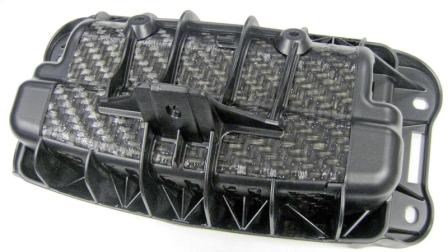What's the Fuss Over Thermoplastic Composites in Automotive?
Find out at a brand-new conference this June in Novi, Mich.
Lightweighting, cost reduction, and new approaches to automotive manufacturing—those are ample cause for the growing excitement over the emerging technology of thermoplastic composites in the European and American auto industry. Get the inside story on this fast-changing field from leaders in developing the technology at the first-ever “Thermoplastic Composites for Automotive” conference, organized jointly by the editors of Plastics Technology magazine, CompositesWorld, and Automotive Design and Production. This event will take place June 10-11 in Novi, Mich., concurrently with the amerimold trade show and conference.
Over a day and a half, we’ll present at least 16 speakers from companies such as KraussMaffei, Engel, BASF, Lanxess, TenCate, Solvay, Celanese, RTP, Aeonix, RocTool, Autodesk Moldflow, and Fibertec—and the list is growing. They will discuss continuous-fiber tapes and organosheets, chopped long-fiber compounds, and processes such as injection overmolding, direct long-fiber thermoplastic (DLFT) molding, in-situ reactive molding, foam-core sandwich molding, and induction mold heating, and computer simulation. A lunchtime speaker from the auto industry will preview the directions in which car companies hope to take these technologies.
And while you’re there, you’ll have plenty of opportunity to look over the amerimold show, with close to 100 exhibits by moldmakers and suppliers of mold components, hot runners, tooling materials, and rapid-prototyping (additive manufacturing) systems.
Learn more about “Thermoplastic Composites for Automotive” here and about amerimold here.
And stay tuned for more news about this first-of-its-kind event.

Related Content
-
Know Your Options in Injection Machine Nozzles
Improvements in nozzle design in recent years overcome some of the limitations of previous filter, mixing, and shut-off nozzles.
-
Process Monitoring or Production Monitoring—Why Not Both?
Molders looking to both monitor an injection molding process effectively and manage production can definitely do both with tools available today, but the question is how best to tackle these twin challenges.
-
Using Data to Pinpoint Cosmetic Defect Causes in Injection Molded Parts
Taking a step back and identifying the root cause of a cosmetic flaw can help molders focus on what corrective actions need to be taken.













